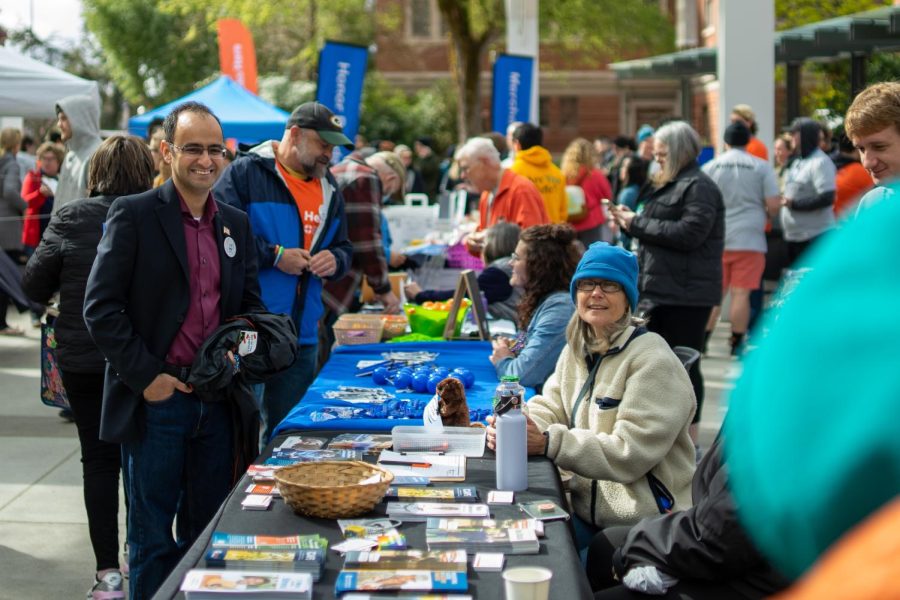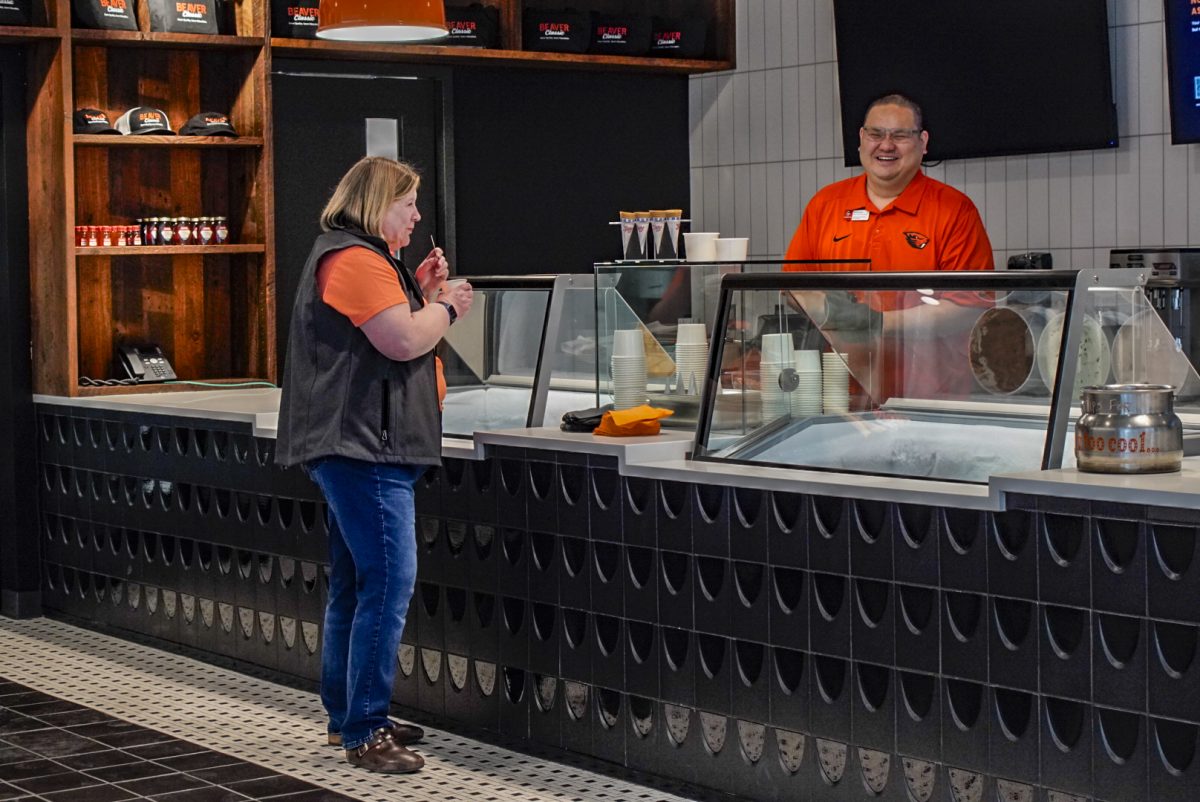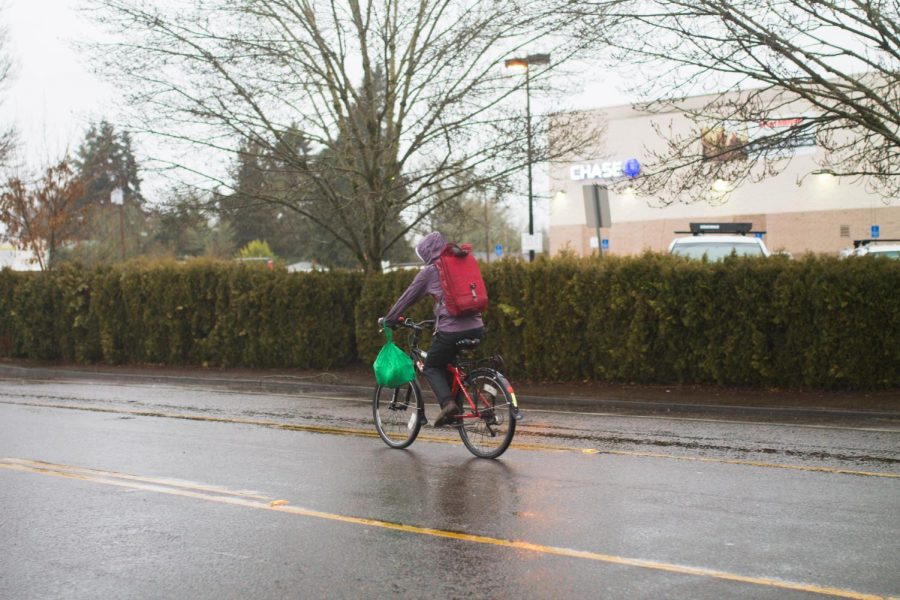Corvallis food deserts make finding nutritious, affordable meals difficult
February 25, 2019
Although there are dining centers and food markets on almost every street on Oregon State University’s campus, the rest of Corvallis has areas struggling to find affordable sources of sustenance.
Food deserts, defined as urban areas where it is difficult to find nutritious and affordable meals, are a major problem in Corvallis, living more than a mile away from a supermarket in an urban area, or 10 miles away in a rural area, according to nutrition research done on the OSU campus. Resources like the food pantry and the Benton County Health Department attempt to mitigate the effects of food deserts.
Tina Dodge Vera, OSU Extension faculty member, works with under-resourced families in Linn and Benton County and coordinates the Supplemental Nutrition Assistance Program-Education Program and the Expanded Food and Nutrition Education Program. Dodge Vera believes certain food deserts from Corvallis’ past remain prominent today.
“Most noted in the community is the lack of an affordable grocery store in South Corvallis,” Dodge Vera said, via email. “A recent MPH intern, Collin Durling, assessed the nutritional environments of retail food stores focusing on the poverty hotspots in Linn and Benton County. He reviewed two hotspots in Corvallis – North and South Corvallis. He found the most healthy retail outlet to be Walmart Neighborhood Market.”
According to Durling, food deserts are more common in Corvallis than is commonly believed.
“Historically, it’s been said that there’s only one food desert in Corvallis, over in Southtown, but that is a misleading statistic,” second-year Public Health master’s student, Collin Durling, said. “There are multiple areas that are devoid of good food – basically all over the spectrum of Corvallis. When you go west of the university, there are several of neighborhoods that don’t have full-line grocery stores nearby.”
Durling said the way Benton County’s farming fields are distributed in between urban areas contributes to the presence of food deserts.
“What you notice is you have these big rural-urban interface parts of Benton County with long stretches of farming fields or other ‘in between’ things,” Durling said, via email. “The main reason these places are food deserts is they are lacking a full-on grocery store, which is critical to maintaining a healthy food environment.”
Places like BCHD and Human Services Resource Center aim to assist with the financial and nutritional needs of the members of the OSU community, as well as Corvallis as a whole.
In Corvallis, the food-serving stores are mainly in a big line down Ninth St. There’s a few more by 53rd Street, and a small group in the Circle Boulevard and Walnut Street area. After that, there’s nothing until the North Albany border, and on the other end there isn’t another grocery store past Safeway on Third Street until the border of Lane County.
Third-year liberal studies major Breonna Keller-Robbins has found some tricks to manage a budget while also eating healthy.
“I’m positive some students just aren’t able to eat healthy foods because of the cost,” Keller-Robbins said, via email. “Dining plans are a blessing when you can afford one, but I think they limit your ability to truly see how much money you’re spending on things that are cheaper off campus. Winco is my number one go-to grocery store in Corvallis. Prices at Winco are significantly cheaper.”
Durling has some advice for finding healthy food both on-and-off campus and is currently in the process of publishing a study titled “The Environmental Nutrition Assessment for Linn and Benton Counties. “
“If it’s possible for you, try leaving campus. On its own, the campus is a fairly toxic food environment,” Durling said. “It’s difficult getting a lot of healthy foods if you live on campus in the dorms, although there are some healthy choices at each dining center if you look for them.”
According to Durling, some of the most cost-efficient places to buy nutritious foods in Corvallis are Winco, Walmart and Trader Joe’s. All three of these stores feature low prices on fresh fruits, meats, organic vegetables and non-processed foods. Foods like these are important to maintaining both physical and mental health and can reduce risks of problems like cardiovascular disease or obesity.
Keller-Robbins also works at the HSRC, where the food pantry is located. The food pantry has grocery-shopping type events, held multiple times a month, where students can get the nutrients they need. There are also always emergency food boxes for students who qualify.
“We specialize in providing food and lending textbooks for free but we can also connect students to affordable housing, resources for low-income folk, SNAP benefits, receiving more financial aid, and more,” Keller-Robbins said, via email.




















































































![Newspaper clipping from February 25, 1970 in the Daily Barometer showing an article written by Bob Allen, past Barometer Editor. This article was written to spotlight both the student body’s lack of participation with student government at the time in conjunction with their class representatives response. [It’s important to note ASOSU was not structured identically to today’s standards, likely having a president on behalf of each class work together as one entity as opposed to one president representing all classes.]](https://dailybaro.orangemedianetwork.com/wp-content/uploads/2025/03/Screenshot-2025-03-12-1.00.42-PM-e1741811160853.png)























